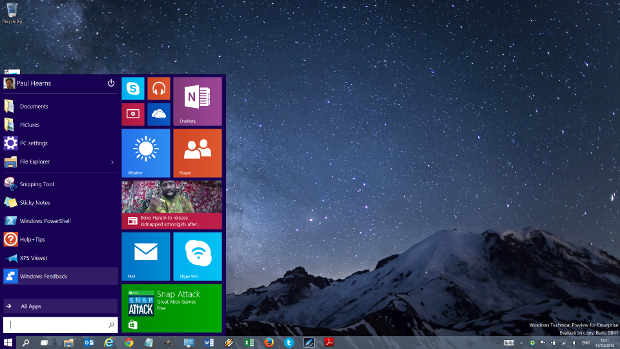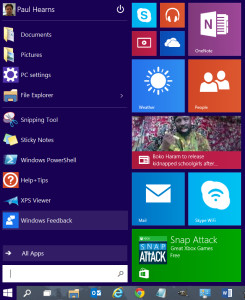 I had the opportunity today to get a run through Windows 10 technical preview.
I had the opportunity today to get a run through Windows 10 technical preview.
Here are a few of the headlines form it, with a full report to come.
At this stage, Microsoft is concentrating on feedback and input from enterprise. Redmond is very keen to ensure that enterprise is looked after when it comes to number 10.
A key element of this version of Windows is that there is only one Windows, from Phone to Server. What this means is that there will be much easier application development, without the need to rework applications for different platforms, or for different presentation within Windows.
A primary focus of Windows 10 is security and this manifests on a few fronts.
Acknowledging the progression of threats from hackers to cybercrime and now cyberespionage, there will be increased use of both two-factor authentication and biometrics for user identity.
Information security is another aspect of the security focus, with the emphasis on following the information, not the application. This is reflecting the fact that users often have several devices and locations, from on-device to cloud storage as well as shared corporate resources, and allows better tracking and tagging of information.
There is also a broadening of mobile device management (MDM) supports and vendors, as well as adherence to open standards, such as those from Open Mobile Alliance Device Management (OMADM) project.
There is increased implementation for virtual private networks (VPN), with improved secure remote access too. Application level VPN support is also incorporated, again with broadened vendor support.
There is still a major focus on application compatibility, with the assessment tools progressing again. The intention is to ensure that the assessment of applications is made faster and less painful for deployments.
A major nod to the enterprise community is the update cycle that will satisfy both the drive for Microsoft’s “accelerated release cadence” and the need to preserve platform stability.
There will be three options available to enterprise for updates. The first is the same that will be available to the consumer users which is essentially all kinds of updates, including functional, on a monthly basis.
The second is the “stability branch”, for the likes of mission critical systems, whereby the updates can be rolled up into major packages every 2-3 years. Security updates can be applied as needed.
The other option is the “active branch” whereby organisations have a 4 month window to install updates. This allows time for assessment, evaluation and testing before the next package becomes available.
Microsoft believes that this framework will give organisations the best flexibility to meet their needs, while moving away from the widely-spaced, big bang updates of the past, while allowing it to continue on its accelerated release cycle.
A lot of the rest of the features are to do with the interface and interaction level, much of which are tipped towards the keyboard and mouse experience. The OS is better at determining its mode of usage, where the interface devices are favoured, or where touch interaction is more to the fore.
I’ll go into those details elsewhere.
The impression is that with the early focus on the enterprise desktop experience, Microsoft is being very pragmatic. Windows 7 now holds the position that Windows XP did, as the last universally lauded version of Windows. With many, sometimes severe, lessons learned, Microsoft is ready to ensure that a Windows for all serves all.









Subscribers 0
Fans 0
Followers 0
Followers